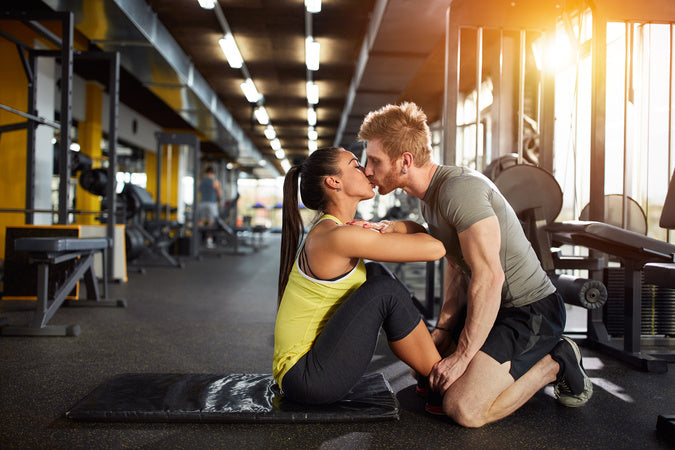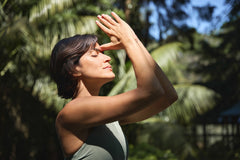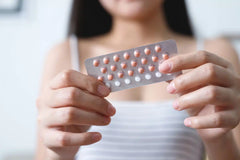The Fascinating Connections Between Exercise and Sex


As we navigate our hectic, busy lives, carving out time for self-care is vital. Exercise and sexual intimacy are both crucial elements of self-care. However, did you know that exercise can give your sex life a boost?
In this blog, we’ll discuss how working out affects your mind and body and the impact of these health benefits for your sex life. We’ll also discuss types of exercise that may be particularly helpful for revving up your libido and sexual performance! Read on to learn about the connection between sweat, endorphins, and your sex life!
Exercise influences aspects of our sex drive and sex lives in several interesting ways.
First, exercise may be particularly helpful for enhancing the sex lives of people in midlife or older. Studies show that perimenopausal women who are more active have fewer menopausal symptoms such as irritability, forgetfulness, vaginal dryness, and decreased sexual desire compared to inactive women. In other words, exercising in menopause may help preserve a healthy libido and sex life! (Source)
In addition, men between the ages of 40 and 75 years who exercise regularly experience significantly less erectile dysfunction compared to inactive men. The benefits of exercise on sexual performance in men are likely related to the vasodilating effect of exercise, enhancing blood flow throughout the body, including the penis. (Source)
Exercise also increases testosterone levels in men. Not surprisingly, testosterone has been shown to support arousal in men and studies support that lifting heavy weights may be particularly helpful for increasing testosterone in men. (Source, Source) The jury is still out on whether these same effects are true for women and testosterone.
Fascinatingly, research also shows that women can experience exercise-induced orgasms! The activities that most commonly induce exercise-induced orgasms (EIO) are abdominal exercises, yoga, cycling, running, climbing, and lifting weights. While the mechanisms aren’t entirely understood, changes in muscular tension and increases in nitric oxide, a vasodilator that increases blood flow throughout the body, including the clitoris, during exercise, may play a role in exercise-induced orgasms.
In other words, orgasms may not always be an intrinsically sexual experience for women; however, this is evidence that exercise can activate pathways involved in sex, possibly helping to reignite women’s sexuality! (Source)
Why Try Post-Exercise Sex?
While you may not immediately associate the sweaty or tired state you experience after exercise with sexy time, the reality is that the post-workout window is an ideal time for enjoying sex due to the shifts in blood flow, hormones, and endorphins activated by exercise.
If you feel extra sexually aroused after a workout, you’re not imagining it. Between increased blood flow to your nether regions, release of exercise-induced endorphins, improved body image and self-esteem, exercise primes your body for sex! Take advantage of the post-exercise “high” by planning some quality sexual intimacy time with your partner or yourself!
Since hydration affects blood flow, make sure you rehydrate post-exercise before sex! Proper hydration may help you maintain that post-exercise “buzz” that leads to great sex. (Source)
Even better, try working out with your partner and then enjoying post-workout sex afterward - once you get home from the gym or yoga studio, that is. Spending quality time with your partner exercising is a great way to strengthen your bond; following that up with great sex is the icing on the cake!
The Bottom Line on Exercise and Sex
Exercise offers an abundance of benefits that not only support your mind and body but also your sex life! Through its effects on stimulating blood flow, increasing levels of feel-good hormones and endorphins, and improving body image, exercise can increase libido, address factors that impair healthy sexual function, and may even promote orgasms (in women)!
Making exercise a regular part of your routine is one of the best things you can do for the long-term health of your body, mind, and sex life. And if you haven’t given post-workout sex a try, give it a go – it may just be the motivation needed to keep coming back for more!
References
Afshari, P., Houshyar, Z., Javadifar, N., Pourmotahari, F., & Jorfi, M. (2016). The relationship between body image and sexual function in middle-aged women. Electronic Physician, 8(11), 3302–3308. https://doi.org/10.19082/3302
Bacon, C. G., Mittleman, M. A., Kawachi, I., Giovannucci, E., Glasser, D. B., & Rimm, E. B. (2006). A prospective study of risk factors for erectile dysfunction. Journal of Urology, 176(1), 217–221. https://doi.org/10.1016/s0022-5347(06)00589-1
Basso, J. C., & Suzuki, W. A. (2017). The effects of acute exercise on mood, cognition, neurophysiology, and neurochemical pathways: a Review. Brain Plasticity, 2(2), 127–152. https://doi.org/10.3233/bpl-160040
González-Alonso, J., Calbet, J. A. L., & Nielsen, B. (1998). Muscle blood flow is reduced with dehydration during prolonged exercise in humans. The Journal of Physiology, 513(3), 895–905. https://doi.org/10.1111/j.1469-7793.1998.895ba.x
Herbenick, D., & Fortenberry, J. D. (2011). Exercise-induced orgasm and pleasure among women. Sexual and Relationship Therapy, 26(4), 373–388. https://doi.org/10.1080/14681994.2011.647902
Ling, J., & Wang, Y.-H. (2023). Association between depressive mood and body image and menopausal symptoms and sexual function in perimenopausal women. World Journal of Clinical Cases, 11(32), 7761–7769. https://doi.org/10.12998/wjcc.v11.i32.7761
Riachy, R., McKinney, K., & Tuvdendorj, D. R. (2020). Various factors may modulate the effect of exercise on testosterone levels in men. Journal of Functional Morphology and Kinesiology, 5(4), 81. https://doi.org/10.3390/jfmk5040081
Seguin, R. A., Eldridge, G., Lynch, W., & Paul, L. C. (2013). Strength training improves body image and physical activity behaviors among midlife and older rural women. Journal of Extension, 51(4). https://www.ncbi.nlm.nih.gov/pmc/articles/PMC4354895/
Suling Li, Karyn Holm, Meg Gulanick. (1999). The relationship between physical activity and perimenopause. Health Care for Women International, 20(2), 163–178. https://doi.org/10.1080/073993399245863
Vingren, J. L., Kraemer, W. J., Ratamess, N. A., Anderson, J. M., Volek, J. S., & Maresh, C. M. (2010). Testosterone physiology in resistance exercise and training. Sports Medicine, 40(12), 1037–1053. https://doi.org/10.2165/11536910-000000000-00000
Wewege, M. A., Desai, I., Honey, C., Coorie, B., Jones, M. D., Clifford, B. K., Leake, H. B., & Hagstrom, A. D. (2021). The effect of resistance training in healthy adults on body fat percentage, fat mass, and visceral fat: A systematic review and meta-analysis. Sports Medicine, 52. https://doi.org/10.1007/s40279-021-01562-2


